Webinars
The impact of electricity reforms on agriculture and groundwater in West Bengal, India
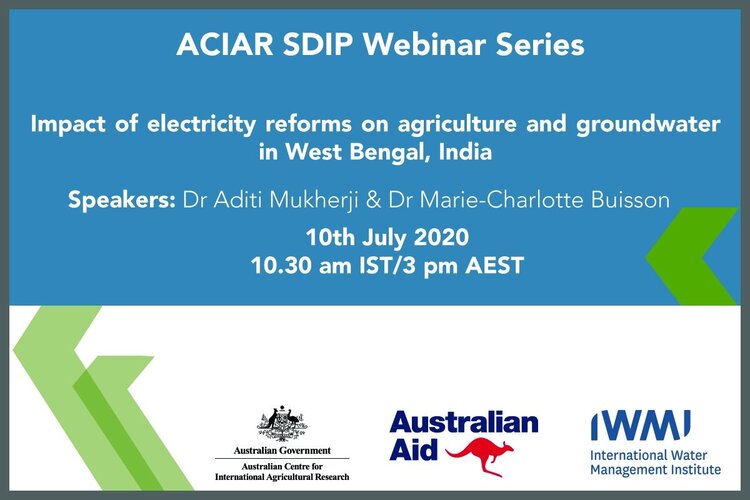
Why has a tripling of electric pumps not resulted in the expected increases in production and groundwater use? Join IWMI researchers as they present and discuss their results.
The private sector investment landscape in the Eastern Gangetic Plains of India
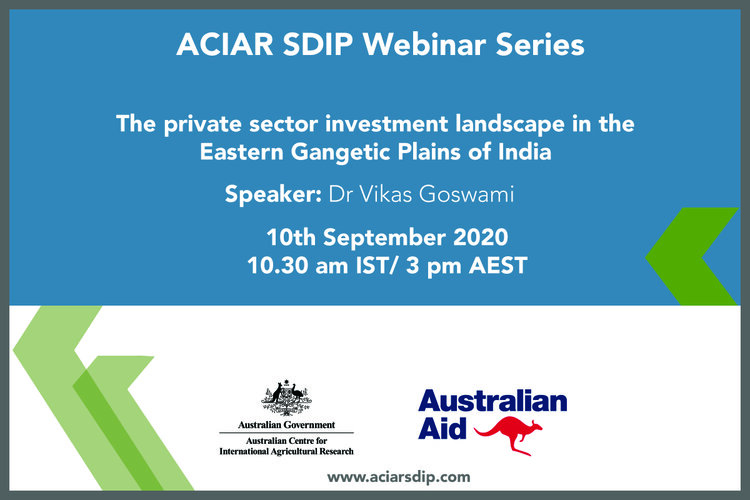
Dr Vikas Goswami describes the investment landscape of the EGP, and reports on the impacts of the COVID-19 pandemic on funding opportunities over the coming financial year.
Which crop yield gaps should we be targeting across the IGP?
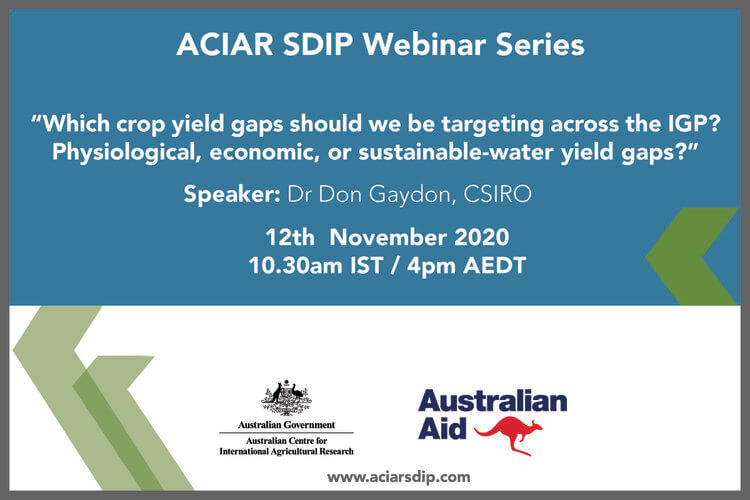
Dr Don Gaydon presents research results demonstrating the differences between physiological, economic and sustainable-water yield gaps across the Indo Gangetic Plains.
Food businesses of India: The story of the enterprises, the entrepreneurs and the employees
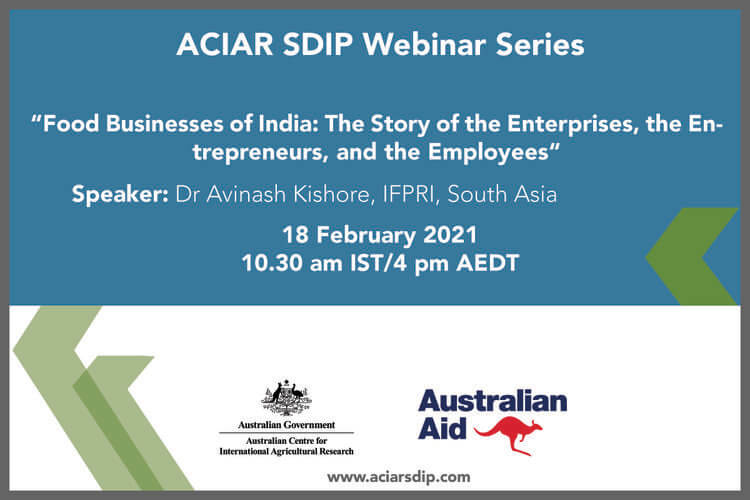
Food businesses play a crucial role in linking farmers and consumers. What do food businesses look like in India, and how are they changing?
Simulation modelling of CA practices: Diffusion and trial site uptake variability in the EGP
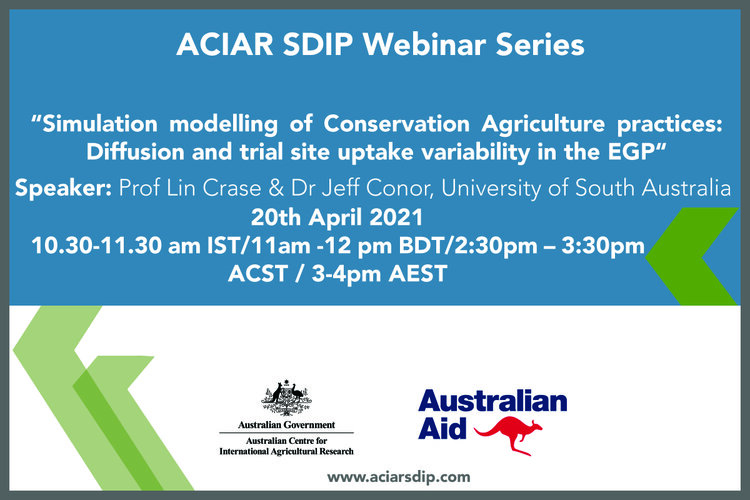
Simulation modelling helps demonstrate the different risk profiles of CASI, and can be used as a discussion tool to consider the challenges to scaling.
Agrarian change and the role of groundwater in Bangladesh and West Bengal
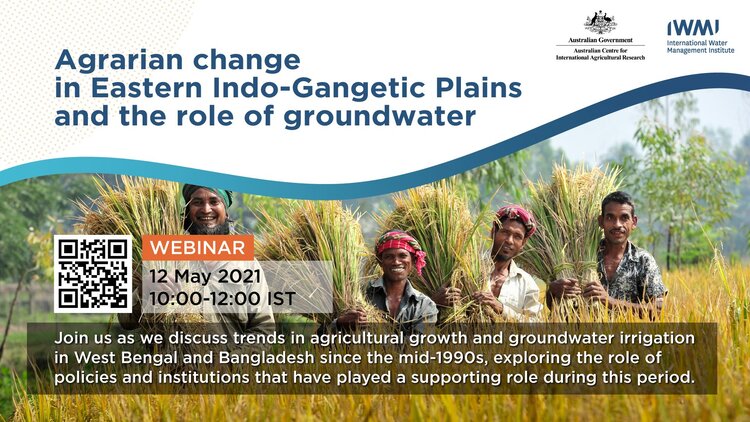
Researchers from IWMI explore trends in agricultural growth and groundwater irrigation since the mid 1990s in Bangladesh and West Bengal, exploring the policies and institutions that have played a supportive role during this period.
Best Worst Scaling Workshop
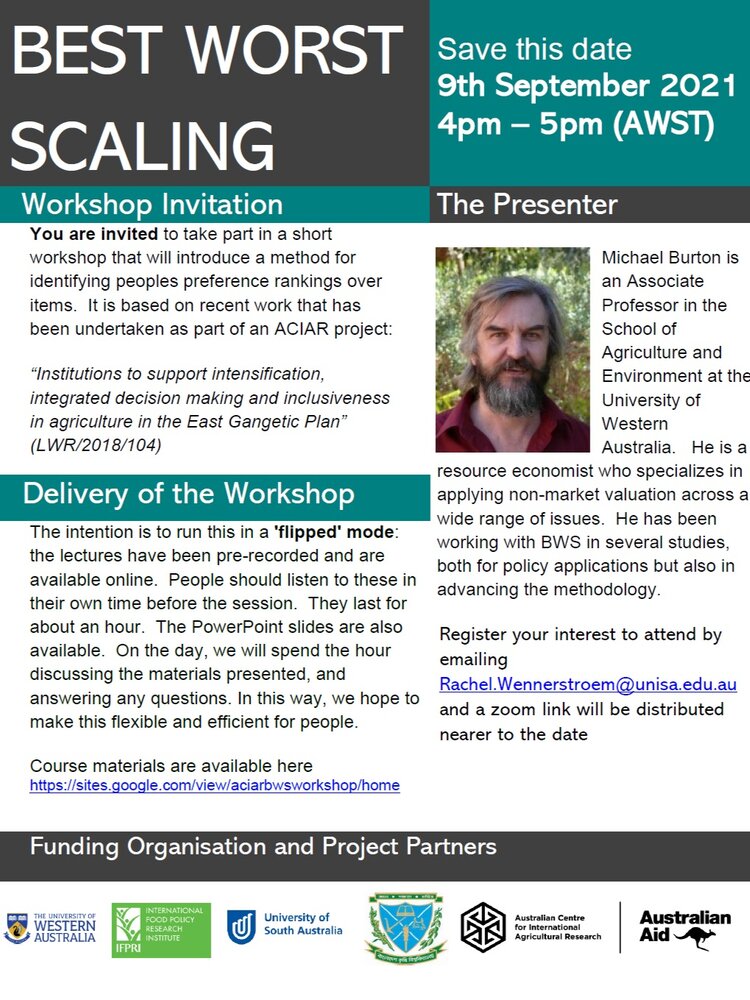
Additional background developed for participants can be accessed here:
Scaling of agricultural innovations through agri-businesses: A small study on Farmers’ Hubs in Bangladesh
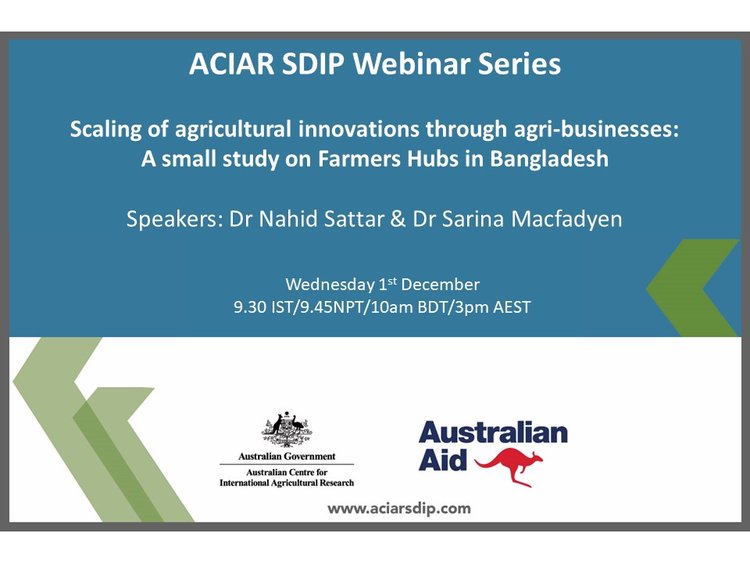
The missing women’s labour force: The past trajectory and future implications of COVID-19

Why has women’s participation in the labour force in India been steadily declining over the past few decades? How will they be impacted by COVID-19? Join Professor Sucharita Sen to explore these questions.
What is constraining sustainable intensification in the Eastern Gangetic Plains?
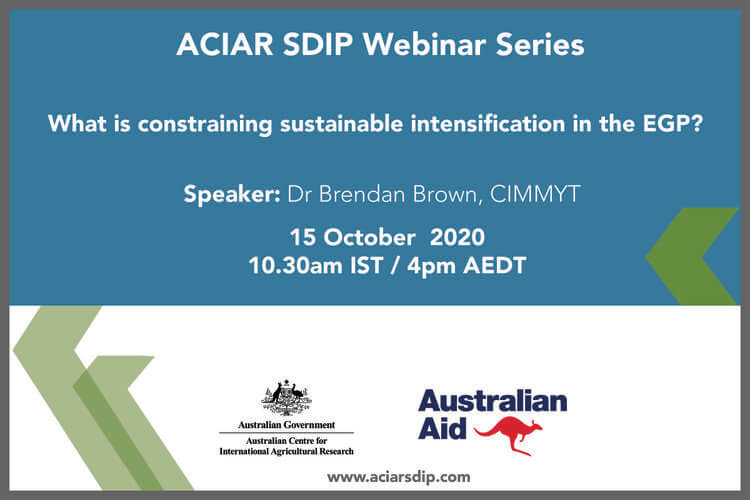
Dr Brendan Brown presents research results exploring constraints to mechanisation and service provision for sustainable intensification.
Gender dynamics of weed management under CA in the EGP
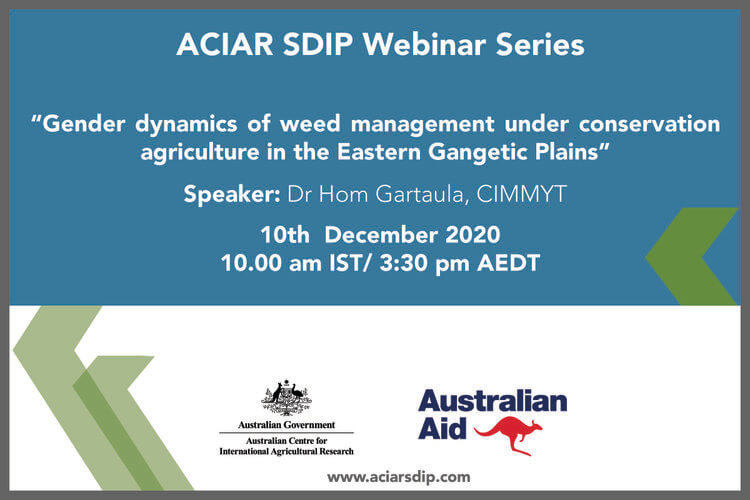
Dr Hom Gartaula explores the impacts of CA on weed dynamics; how well this is understood by farmers; and how it affects labour commitments for both men and women
Commercialisation of smallholders’ CA-based planters in Bangladesh: Lessons learnt
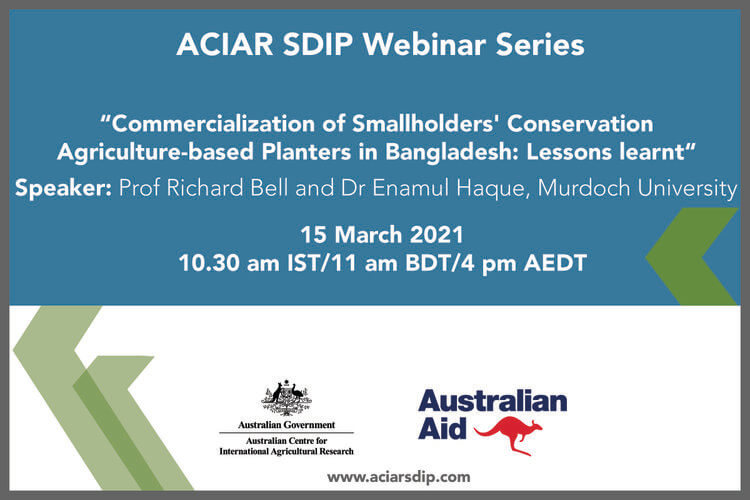
A Q & A session during the webinar is supplemented below.
To what extent are the ‘benefits’ contingent on well-trained operators of the machines?
In the initial stages, training is needed for the operators on how to operate the machine and also how to select sowing depth and adjust the depth control; how to sow into stubble; how to maintain sowing lines, fertilizer calibration, and so on. At least two training sessions are provided to new LSP before they start (which develop their confidence about machine operation) and there are follow up checks in the field. It probably takes a year for operators to become fully skilled. Linking new service providers and operators with experienced operators has been arranged by our project and that helps as well. When there are enough planters in the market, operators will learn from each other just the way they do with tractors and other machinery. The key is to recognise that when a farmer observes poor crop planting, or poor crop performance, they blame the machine when it could be due to an inexperienced or unskilled operator and inadequate weed control measures.
Can the VMP be used with 4W tractor? Has there been any work done to compare the cost of using VMP with 4W tractor over a larger area using land pooling?
We are currently developing a prototype of the VMP for small 4 wheel tractor tractors and the initial testing will be finished within a few months. The 1st version has been tested and based on that – new rotary designed and manufactured, prototype of new vertical disk seed meter developed.
A recent CIMMYT study found farmers were not too concerned about weeds if they had experience with herbicides. What has your project team’s experience been?
Pre-planting weed control is different in CA compared to conventional agriculture because it doesn’t have the benefit of tillage to kill weeds at sowing. Technologies for weed control including the use of herbicides as well as the benefits of residue retention are still being developed. Our CA Manual outlines what we’ve learnt already and it will soon be in Bangla too. Experienced CA operators for generally don’t have a problem with weeds. And as Enamul Haque mentioned, immediate after aman and boro rice, jute, lentil, and many cases even mustard, commonly very few weeds remains in the field and there is a great opportunity to get crops established with minimum use of lockdown or pre-emergent herbicides. Over 2-5 years we have found the weed seed bank decreases by 33 % in CA fields..
Do you have any plan for adoption of VMP in the Barishal Region? There is a huge area in Barishal where mungbeans are being cultivated.
Mung bean is a prospective crop for VMP sowing and we’ve done it successfully in farmers’ fields. In general, the business model for LSP’s will work better if there are multiple crops that can be sown so that the planting can extend over several months rather than a single planting season. The question of whether to spread to Barisal is a commercial decision for Hoque Corporation: is it better to create demand and develop a market in Barisal or in other areas such as the intensive cropping areas?
The project is promoting only a transplanter. Could the project include harvester because it is also important for Bangladesh?
A range of operations on smallholder farms can be mechanised including sowing, reaping, combine harvesting. For the combine harvester, possibly a different business model would be needed because of the larger initial investment and the larger area that has to be harvested to break even. We’re working with groups of farmers to see if they can invest in a combine harvester and develop a business model to make it profitable.
We observed some problem with seeds with VMP in high residue (more the 40 cm) containing fields. Is it possible to solve this problem?
For every seeder there’s an optimum height of straw for efficient seed placement and covering. Even big planters pulled by high horsepower four wheel tractors have limits on straw height for effective sowing. Experienced operators have been able to sow into straw as high as 60 cm but it depends on whether the straw is dry or wet and how skilled the operator is, the crop type and the row spacing. In general, we would probably recommend the straw height is 30 to 40 cm maximum for the VMP.
What is the mode of action of those herbicide that was used at CA?
We generally used glyphosate as a knockdown before seeding. Pre-emergence and post emergent herbicides have been tested for a range of species: the mode of action of herbicide applied varies with the species. Drs Taslima Jahan and Mobarak Hossain have published a number of papers on their findings of the best combinations of herbicides for weed control in a range of crops. The CA Manual (soon to be in Bangla) outlines these findings.